-
 Bitcoin
Bitcoin $107,352.1067
0.28% -
 Ethereum
Ethereum $2,429.3531
-0.90% -
 Tether USDt
Tether USDt $1.0001
-0.02% -
 XRP
XRP $2.1894
4.62% -
 BNB
BNB $646.7968
0.36% -
 Solana
Solana $147.4290
4.03% -
 USDC
USDC $0.9998
-0.02% -
 TRON
TRON $0.2756
1.52% -
 Dogecoin
Dogecoin $0.1630
1.14% -
 Cardano
Cardano $0.5612
1.18% -
 Hyperliquid
Hyperliquid $37.0580
-0.05% -
 Bitcoin Cash
Bitcoin Cash $496.9410
-0.09% -
 Sui
Sui $2.7318
3.19% -
 Chainlink
Chainlink $13.1503
0.58% -
 UNUS SED LEO
UNUS SED LEO $9.0766
0.55% -
 Avalanche
Avalanche $17.7220
1.46% -
 Stellar
Stellar $0.2380
1.52% -
 Toncoin
Toncoin $2.8439
0.38% -
 Shiba Inu
Shiba Inu $0.0...01143
1.84% -
 Litecoin
Litecoin $85.8053
1.47% -
 Hedera
Hedera $0.1483
2.70% -
 Monero
Monero $314.3240
2.12% -
 Bitget Token
Bitget Token $4.6725
0.77% -
 Dai
Dai $1.0000
0.00% -
 Polkadot
Polkadot $3.3555
1.28% -
 Ethena USDe
Ethena USDe $1.0001
0.02% -
 Uniswap
Uniswap $7.0890
2.64% -
 Pi
Pi $0.5355
-3.40% -
 Pepe
Pepe $0.0...09393
1.06% -
 Aave
Aave $256.8136
-1.90%
How to avoid BTC withdrawal scams? What are the traps?
Be cautious of BTC withdrawal scams; always verify requests, use secure wallets, and enable 2FA to protect your cryptocurrency from fraudsters.
May 14, 2025 at 07:28 am
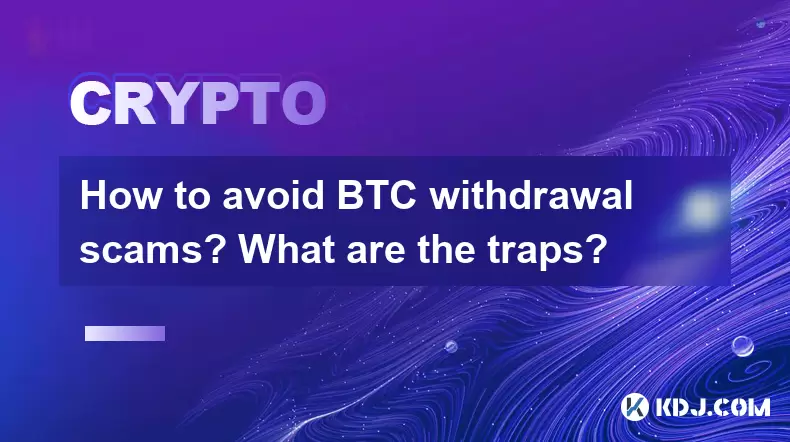
Understanding BTC Withdrawal Scams
BTC withdrawal scams are fraudulent schemes designed to trick individuals into sending their Bitcoin to scammers under the guise of a legitimate withdrawal process. These scams can take various forms, but they all share the common goal of stealing your cryptocurrency. To effectively avoid these scams, it's crucial to understand the common traps and learn how to protect yourself.
Common Traps in BTC Withdrawal Scams
There are several common traps that scammers use to deceive victims during the BTC withdrawal process. Being aware of these traps can help you stay safe:
Fake Websites and Phishing Links: Scammers create websites that look identical to legitimate cryptocurrency exchanges or wallets. They send phishing emails or messages with links to these fake sites, tricking users into entering their login credentials or private keys.
Impersonation of Customer Support: Scammers may pose as customer support representatives from reputable exchanges. They might contact you via phone, email, or social media, claiming there's an issue with your withdrawal and requesting personal information or direct access to your wallet.
Fake Investment Opportunities: Some scams promise high returns on investments that require you to withdraw your BTC to a specific address. Once the BTC is sent, the scammers disappear, leaving you with no returns and a loss of your funds.
Malware and Remote Access: Malicious software can be installed on your device, allowing scammers to monitor your activities and steal your BTC when you initiate a withdrawal. They might also trick you into granting them remote access to your computer.
How to Verify the Legitimacy of a Withdrawal Request
Before proceeding with any BTC withdrawal, it's essential to verify the legitimacy of the request. Here are steps to ensure you're dealing with a legitimate process:
Check the Source: Always verify the source of the withdrawal request. Ensure it's coming from the official website or app of your exchange or wallet provider. Never trust unsolicited emails or messages.
Use Official Contact Methods: If you receive a withdrawal request or notice, contact the customer support of the exchange or wallet provider using the contact information listed on their official website. Do not use any contact details provided in the suspicious message.
Double-Check the Withdrawal Address: Before sending your BTC, double-check the withdrawal address. Scammers might manipulate the address slightly to make it look similar to the legitimate one. Use copy-paste functions to avoid typos.
Enable Two-Factor Authentication (2FA): Always enable 2FA on your accounts. This adds an extra layer of security and can prevent unauthorized withdrawals.
Protecting Your BTC During Withdrawal
To safeguard your BTC during the withdrawal process, follow these protective measures:
Use Secure Wallets: Only use reputable and secure wallets for storing and withdrawing your BTC. Research the wallet's security features and user reviews before trusting it with your funds.
Keep Software Updated: Ensure that your operating system, wallet software, and any other related applications are up to date. Updates often include security patches that protect against known vulnerabilities.
Beware of Public Wi-Fi: Avoid conducting BTC withdrawals on public Wi-Fi networks. These networks can be less secure and more susceptible to hacking attempts.
Use Strong Passwords: Use strong, unique passwords for your crypto accounts and change them regularly. Avoid using easily guessable passwords and never reuse passwords across different platforms.
Steps to Safely Withdraw BTC
To safely withdraw your BTC, follow these detailed steps:
Log into Your Account: Access your cryptocurrency exchange or wallet account using the official website or app. Ensure you're using a secure, private connection.
Navigate to Withdrawal Section: Find the withdrawal section within your account. This is usually labeled as "Withdraw" or "Send."
Enter Withdrawal Details: Enter the amount of BTC you wish to withdraw and the recipient's address. Double-check the address to ensure it's correct.
Review Transaction Details: Before confirming the transaction, review all the details carefully. Make sure the amount and address are correct.
Confirm Withdrawal: Use any required security measures, such as 2FA, to confirm the withdrawal. Wait for the transaction to be processed and confirmed on the blockchain.
What to Do If You Fall Victim to a BTC Withdrawal Scam
If you suspect that you've fallen victim to a BTC withdrawal scam, take immediate action to minimize the damage:
Stop All Transactions: Immediately stop any further transactions from your account. Change your passwords and enable 2FA if not already done.
Contact Your Exchange or Wallet Provider: Report the scam to your exchange or wallet provider. They may be able to help you recover your funds or at least prevent further unauthorized access.
File a Police Report: Report the scam to your local police department. While recovering stolen cryptocurrency can be challenging, a police report can be useful for insurance claims or future legal actions.
Monitor Your Accounts: Keep a close eye on your accounts for any further suspicious activity. Consider using a new wallet or exchange to store your remaining funds.
Frequently Asked Questions
Q: Can I recover my BTC if it's been sent to a scammer's address?
A: Recovering BTC sent to a scammer's address is extremely difficult and often impossible. Once a transaction is confirmed on the blockchain, it's irreversible. However, reporting the incident to your exchange or wallet provider and law enforcement can sometimes lead to partial recovery if the funds haven't been moved yet.
Q: Are there any tools to help detect fake websites?
A: Yes, there are several tools and browser extensions designed to help detect fake websites. For instance, tools like URLVoid, PhishTank, and Netcraft can analyze a website's URL and provide information on its legitimacy. Additionally, using security-focused browsers like Brave can offer built-in protection against phishing attempts.
Q: How often should I move my BTC to a cold wallet?
A: The frequency of moving your BTC to a cold wallet depends on your trading activity and security preferences. If you're actively trading, you might keep some BTC in a hot wallet for convenience. However, for long-term storage, it's advisable to move the majority of your BTC to a cold wallet as soon as possible to minimize the risk of theft.
Q: What are some red flags to watch out for in withdrawal requests?
A: Some red flags to watch out for include unsolicited messages requesting personal information or immediate action, withdrawal addresses that look slightly different from the official ones, and any request to bypass normal security measures like 2FA. Always verify the source and legitimacy of any withdrawal request before proceeding.
Disclaimer:info@kdj.com
The information provided is not trading advice. kdj.com does not assume any responsibility for any investments made based on the information provided in this article. Cryptocurrencies are highly volatile and it is highly recommended that you invest with caution after thorough research!
If you believe that the content used on this website infringes your copyright, please contact us immediately (info@kdj.com) and we will delete it promptly.
- RUVI Token Soars: Can It Eclipse Cardano's Forecast?
- 2025-06-29 02:30:12
- Meme Coin Mania: Can Little Pepe Outshine Shiba Inu and Dogecoin?
- 2025-06-29 02:30:12
- XRP Tokens: Navigating Financial Status and the Art of Buying In
- 2025-06-29 02:50:12
- Transparent Fees, Trading Power, No Surprises: LeveX's Honest Approach
- 2025-06-29 02:50:12
- DAO Price, Total Value Locked, and All-Time Highs: What's Driving the DeFi Surge?
- 2025-06-29 03:21:18
- BlockDAG, Polygon, Render, and Polkadot: Navigating the Altcoin Landscape in NYC Style
- 2025-06-29 03:21:18
Related knowledge
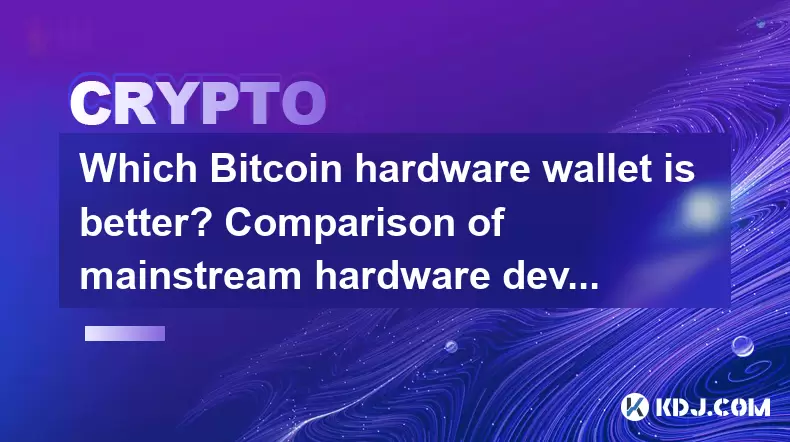
Which Bitcoin hardware wallet is better? Comparison of mainstream hardware devices
Jun 16,2025 at 02:08am
What Is a Bitcoin Hardware Wallet?A Bitcoin hardware wallet is a physical device designed to securely store the private keys associated with your cryptocurrency holdings. Unlike software wallets, which are more vulnerable to online threats, hardware wallets keep private keys offline, significantly reducing the risk of unauthorized access. These devices ...

What are Bitcoin non-custodial wallets? Self-controlled private key recommendation
Jun 16,2025 at 11:29pm
Understanding Bitcoin Non-Custodial WalletsA Bitcoin non-custodial wallet is a type of digital wallet where users retain full control over their private keys. Unlike custodial wallets, which are managed by third-party services such as exchanges, non-custodial wallets ensure that only the user can access and manage their funds. This means no intermediary...
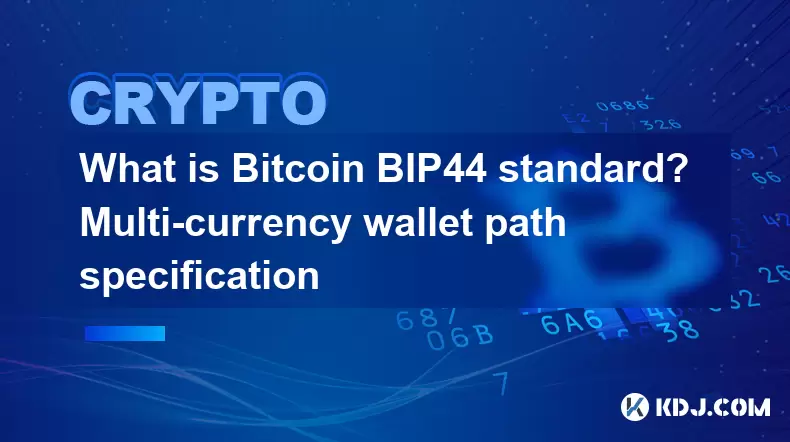
What is Bitcoin BIP44 standard? Multi-currency wallet path specification
Jun 15,2025 at 04:08pm
Understanding the BIP44 Standard in Bitcoin and CryptocurrencyThe BIP44 standard, which stands for Bitcoin Improvement Proposal 44, is a widely adopted hierarchical deterministic wallet structure used across various cryptocurrencies. It defines a structured path format that enables wallets to support multiple currencies while maintaining consistency and...

What is Bitcoin HD wallet? Advantages of layered deterministic wallets
Jun 16,2025 at 03:56pm
Understanding Bitcoin HD WalletsA Bitcoin HD wallet, or Hierarchical Deterministic wallet, is a type of cryptocurrency wallet that generates multiple keys and addresses from a single seed phrase. Unlike traditional wallets that create random private keys for each transaction, an HD wallet follows a structured hierarchy to derive keys in a deterministic ...
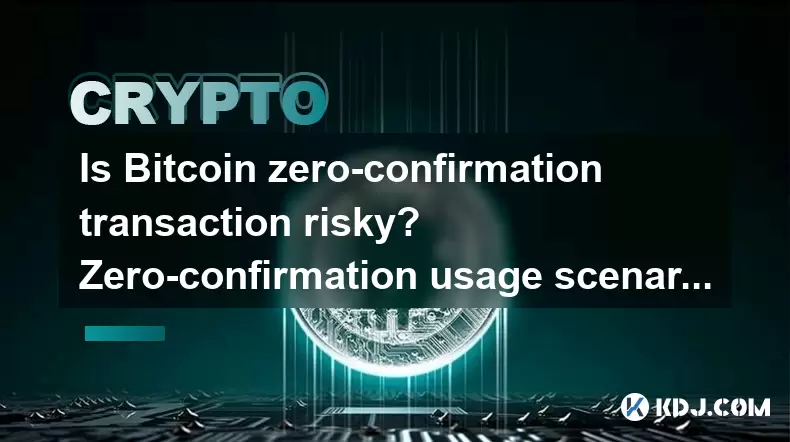
Is Bitcoin zero-confirmation transaction risky? Zero-confirmation usage scenarios
Jun 15,2025 at 03:57am
Understanding Zero-Confirmation Transactions in BitcoinBitcoin zero-confirmation transactions, often referred to as 'unconfirmed transactions,' are those that have been broadcast to the network but have not yet been included in a block. This means they have not received any confirmations from miners. While these transactions can be useful in certain con...
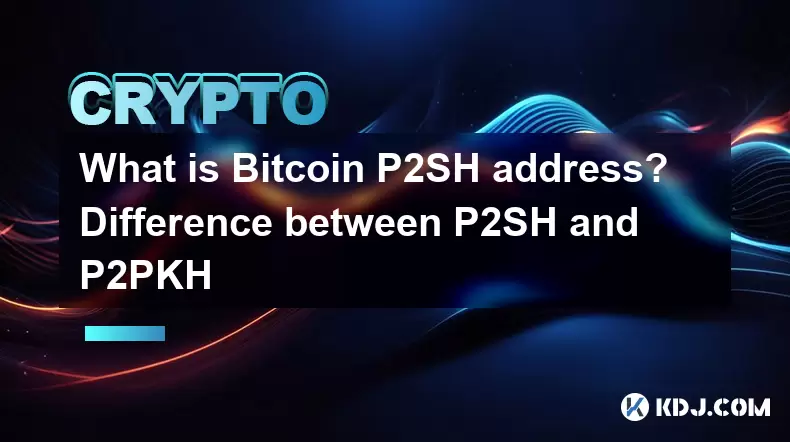
What is Bitcoin P2SH address? Difference between P2SH and P2PKH
Jun 16,2025 at 09:49pm
Understanding Bitcoin P2SH AddressesA Pay-to-Script-Hash (P2SH) address in the Bitcoin network is a type of address that allows users to send funds to a script hash rather than directly to a public key hash, as seen in earlier address formats. This innovation was introduced through BIP 16, enhancing flexibility and enabling more complex transaction type...

Which Bitcoin hardware wallet is better? Comparison of mainstream hardware devices
Jun 16,2025 at 02:08am
What Is a Bitcoin Hardware Wallet?A Bitcoin hardware wallet is a physical device designed to securely store the private keys associated with your cryptocurrency holdings. Unlike software wallets, which are more vulnerable to online threats, hardware wallets keep private keys offline, significantly reducing the risk of unauthorized access. These devices ...

What are Bitcoin non-custodial wallets? Self-controlled private key recommendation
Jun 16,2025 at 11:29pm
Understanding Bitcoin Non-Custodial WalletsA Bitcoin non-custodial wallet is a type of digital wallet where users retain full control over their private keys. Unlike custodial wallets, which are managed by third-party services such as exchanges, non-custodial wallets ensure that only the user can access and manage their funds. This means no intermediary...

What is Bitcoin BIP44 standard? Multi-currency wallet path specification
Jun 15,2025 at 04:08pm
Understanding the BIP44 Standard in Bitcoin and CryptocurrencyThe BIP44 standard, which stands for Bitcoin Improvement Proposal 44, is a widely adopted hierarchical deterministic wallet structure used across various cryptocurrencies. It defines a structured path format that enables wallets to support multiple currencies while maintaining consistency and...

What is Bitcoin HD wallet? Advantages of layered deterministic wallets
Jun 16,2025 at 03:56pm
Understanding Bitcoin HD WalletsA Bitcoin HD wallet, or Hierarchical Deterministic wallet, is a type of cryptocurrency wallet that generates multiple keys and addresses from a single seed phrase. Unlike traditional wallets that create random private keys for each transaction, an HD wallet follows a structured hierarchy to derive keys in a deterministic ...

Is Bitcoin zero-confirmation transaction risky? Zero-confirmation usage scenarios
Jun 15,2025 at 03:57am
Understanding Zero-Confirmation Transactions in BitcoinBitcoin zero-confirmation transactions, often referred to as 'unconfirmed transactions,' are those that have been broadcast to the network but have not yet been included in a block. This means they have not received any confirmations from miners. While these transactions can be useful in certain con...

What is Bitcoin P2SH address? Difference between P2SH and P2PKH
Jun 16,2025 at 09:49pm
Understanding Bitcoin P2SH AddressesA Pay-to-Script-Hash (P2SH) address in the Bitcoin network is a type of address that allows users to send funds to a script hash rather than directly to a public key hash, as seen in earlier address formats. This innovation was introduced through BIP 16, enhancing flexibility and enabling more complex transaction type...
See all articles

























































































